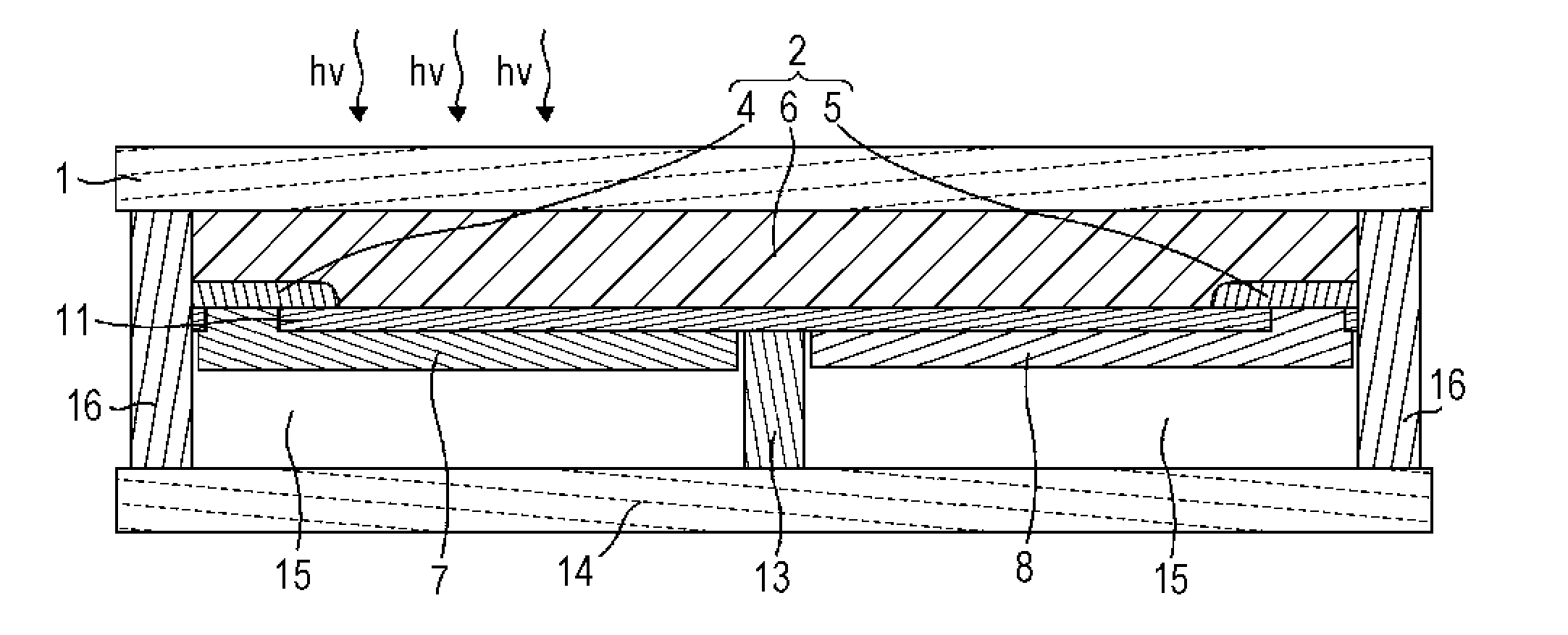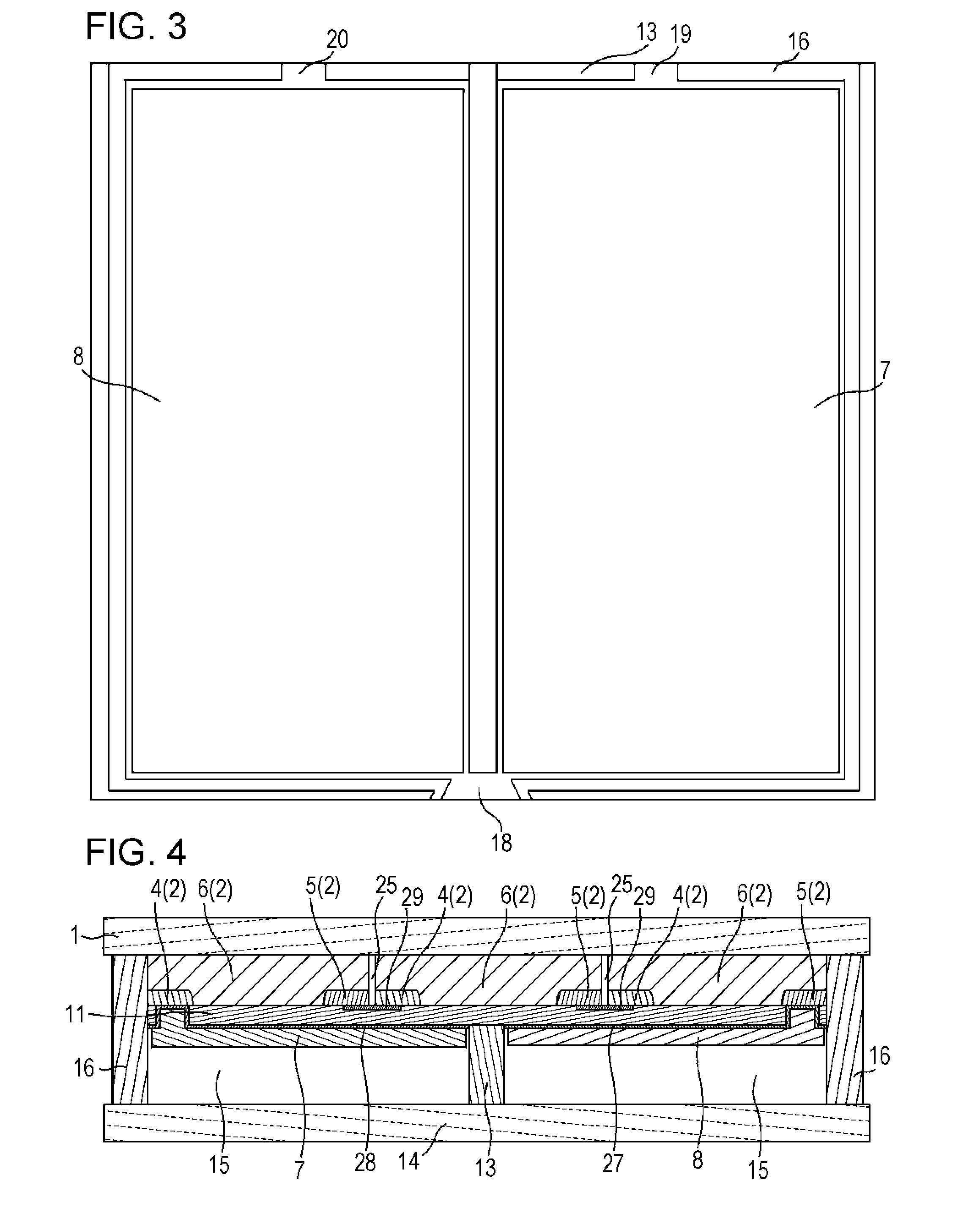Hydrogen production device and method for producing hydrogen
a production device and hydrogen technology, applied in the direction of electrolytic organic production, instruments, oxygen/ozone/oxide/hydroxide, etc., can solve the problems of difficult compensation, low energy use efficiency, and increased energy consumption of power generation facilities, so as to increase the amount increase the light use efficiency, and increase the effect of light incident on the photoelectric conversion portion
- Summary
- Abstract
- Description
- Claims
- Application Information
AI Technical Summary
Benefits of technology
Problems solved by technology
Method used
Image
Examples
Embodiment Construction
[0031]A hydrogen production device of the present invention includes a photoelectric conversion portion having a light-receiving surface and a back surface, a first electrolysis electrode provided on the back surface, and a second electrolysis electrode provided on the back surface. As a result of reception of light by the photoelectric conversion portion, a potential difference is generated between a first area on the back surface and a second area on the back surface, the first area becomes electrically connected to the first electrolysis electrode, and the second area becomes electrically connected to the second electrolysis electrode. When the first electrolysis electrode and the second electrolysis electrode contact an electrolyte solution, the first electrolysis electrode forms a hydrogen generation portion that generates H2 from the electrolyte solution using an electromotive force generated as a result of reception of light by the photoelectric conversion portion and the sec...
PUM
 Login to View More
Login to View More Abstract
Description
Claims
Application Information
 Login to View More
Login to View More - R&D
- Intellectual Property
- Life Sciences
- Materials
- Tech Scout
- Unparalleled Data Quality
- Higher Quality Content
- 60% Fewer Hallucinations
Browse by: Latest US Patents, China's latest patents, Technical Efficacy Thesaurus, Application Domain, Technology Topic, Popular Technical Reports.
© 2025 PatSnap. All rights reserved.Legal|Privacy policy|Modern Slavery Act Transparency Statement|Sitemap|About US| Contact US: help@patsnap.com



